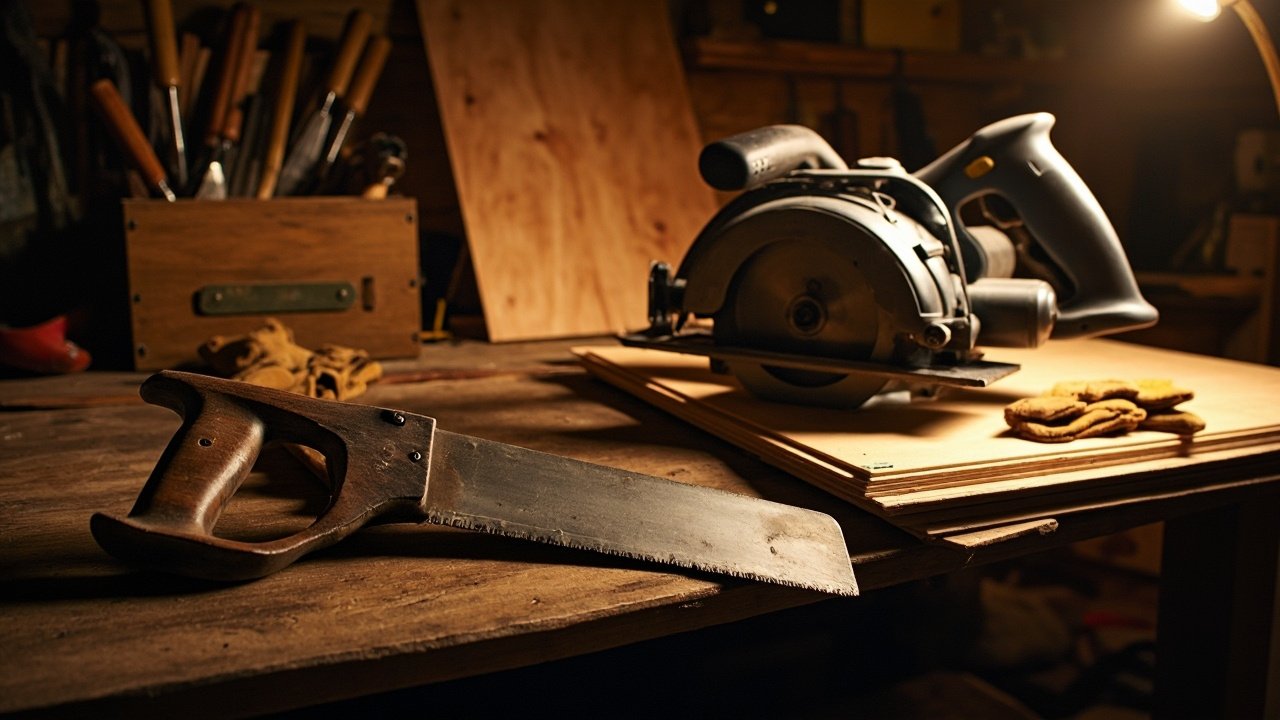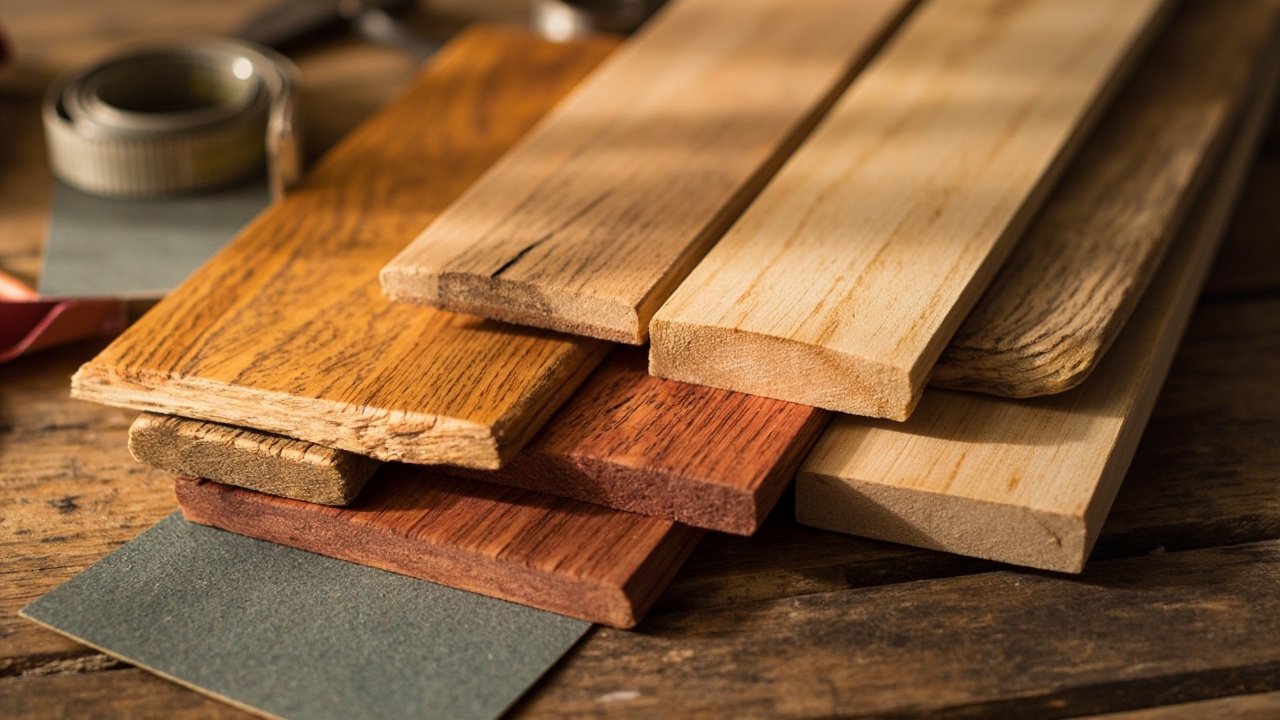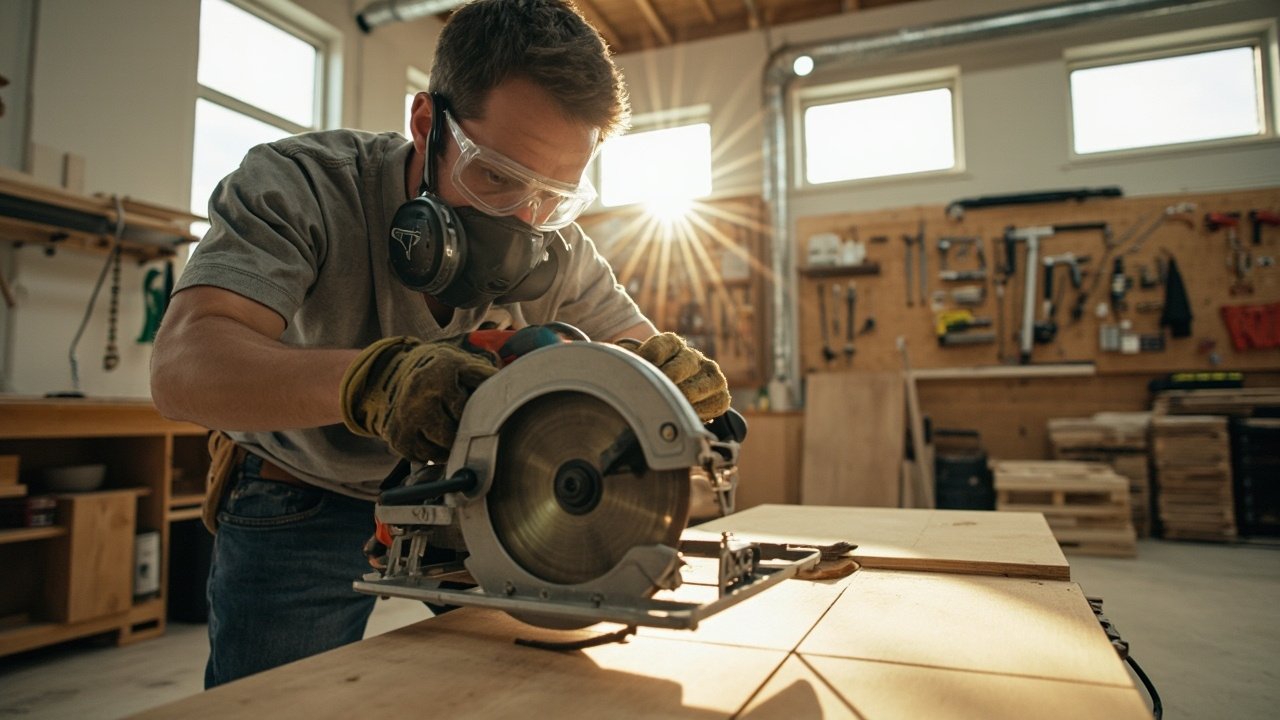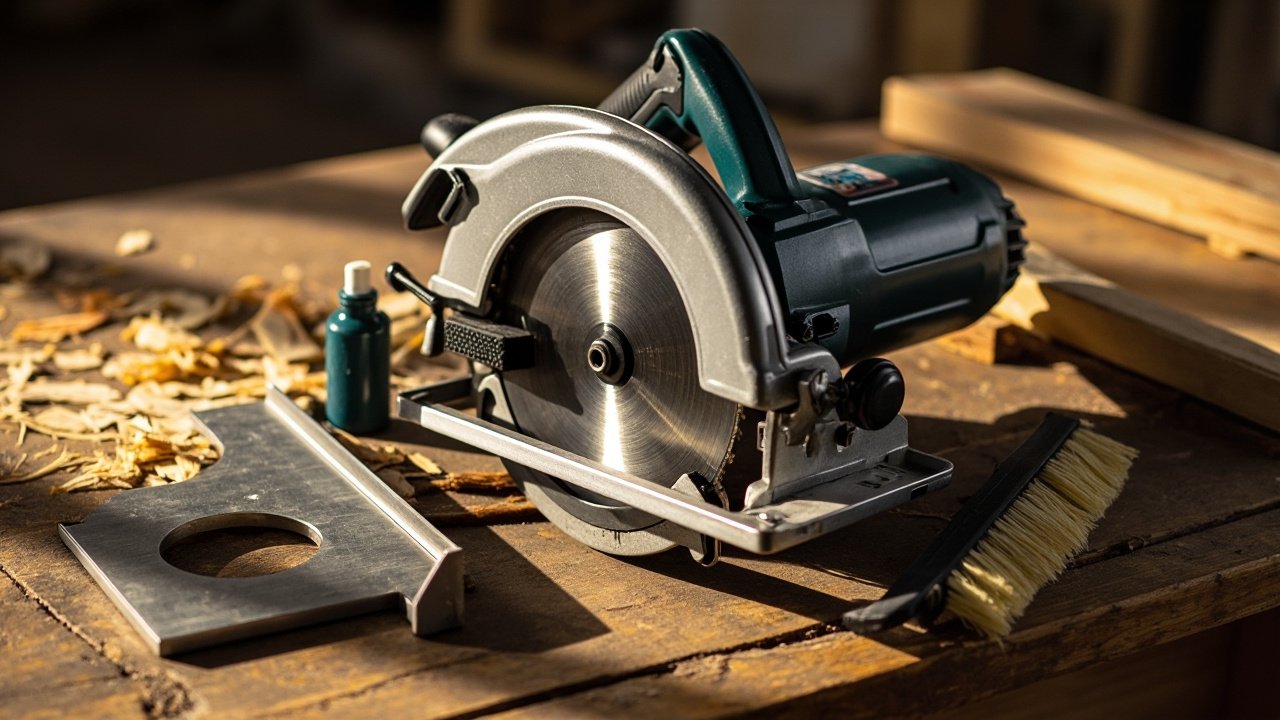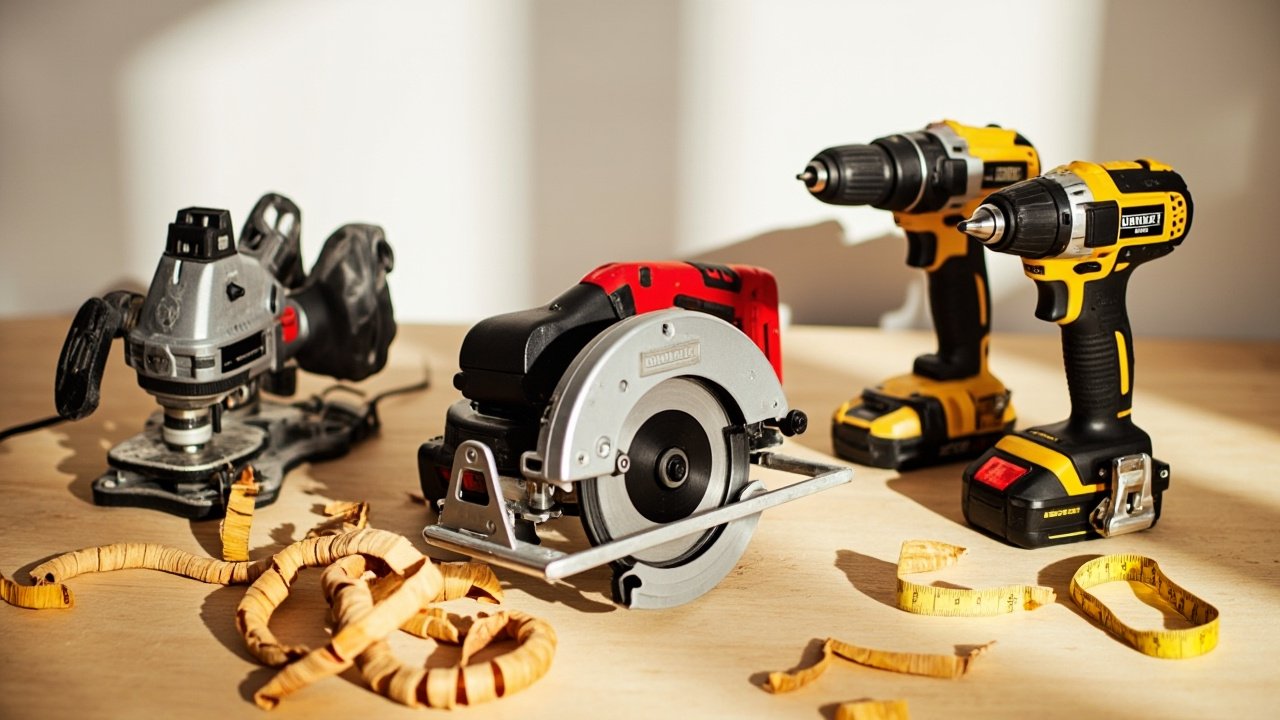When I first picked up a saw to begin my woodworking journey, I stood frozen in the hardware aisle, overwhelmed by the options. “Should I choose manual or electric saws for woodworking?” This fundamental question plagues every beginner and even challenges experienced craftsmen on certain projects. In this comprehensive guide, we’ll explore every aspect of manual vs electric saws for woodworking to help you make informed decisions for any project.
Table of Contents
Table of Contents
What Are Manual and Electric Saws? Understanding the Core Differences
The debate between manual vs electric saws for woodworking begins with understanding their fundamental designs:
Manual Saws: Time-Tested Cutting Tools
Manual saws represent the original woodworking tools, with designs perfected over centuries:
- Operate entirely through human power
- Require physical strength and technique
- Offer unmatched tactile feedback
- Common types include:
- Hand saws (crosscut and rip saws)
- Back saws (miter box saws)
- Coping saws for intricate work
- Japanese pull saws (Dozuki and Ryoba)
- Bow saws for outdoor use
Electric Saws: Modern Power Cutting Solutions
Electric saws revolutionized woodworking with mechanical advantage:
- Powered by electricity or batteries
- Provide consistent cutting power
- Reduce physical exertion
- Major categories include:
- Circular saws (sidewinders and worm drives)
- Jigsaws for curved cuts
- Table saws for precision ripping
- Miter saws for angled cuts
- Band saws for resawing lumber
When considering manual vs electric saws for woodworking, remember that manual tools connect you to traditional craftsmanship while electric tools offer modern efficiency. Many woodworkers eventually own both types for different applications.
When to Use a Manual Saw: The Art of Hand Tool Woodworking
1. Precision Work Demanding Artistic Control
Manual saws excel when millimeters matter. Their direct physical connection allows for:
- Micro-adjustments mid-cut
- Better feel for wood grain direction
- Ability to stop precisely at marked lines
Real-world application: When fitting dovetail joints for handmade drawers, even the best electric saw can’t match the control of a sharp dovetail saw. The tactile feedback helps prevent overcutting delicate pins and tails.
2. Noise-Sensitive Environments
The quiet operation of manual saws makes them ideal for:
- Urban apartments with noise restrictions
- Late-night hobby work when family sleeps
- Historical restoration sites with sound limitations
- Schools teaching introductory woodworking
Pro tip: In noise-regulated communities like many California coastal towns, manual saws let you work without violating local ordinances.
3. Small Projects Needing Quick Setup
Manual saws shine for:
- Single-cut adjustments
- Emergency repairs
- Craft projects with children
- Outdoor camping projects
Example: When a storm-damaged fence picket needs replacing in your Colorado mountain cabin, a simple handsaw solves the problem without dragging out generators or extension cords.
4. Extreme Environmental Conditions
Manual saws outperform electric in:
- Subzero temperatures (Alaska, North Dakota winters)
- High humidity (Florida summers)
- Remote locations without power
- Dusty environments that clog electric motors
Survival tip: Many Midwest woodworkers keep manual saws as backups during winter power outages when electric tools become unusable.
When to Use an Electric Saw: Powering Through Projects
1. Large-Scale Projects Requiring Repetitive Cuts
Electric saws dominate when facing:
- Deck building (50+ identical balusters)
- Fence construction (hundreds of pickets)
- Flooring installation (continuous rip cuts)
- Shed construction (multiple framing members)
Time saver: Building a 200-square-foot deck in Texas? A quality circular saw from Home Depot can save 15+ hours compared to manual sawing.
2. Commercial Work with Tight Deadlines
Professional situations favoring electric saws:
- Contractors billing by the hour
- Production furniture workshops
- Home renovation timelines
- Custom cabinet shops
Business insight: Pennsylvania Amish furniture makers increasingly use electric saws for rough cutting before switching to manual tools for final joinery.
3. Hardwood Processing and Resawing
Electric power conquers tough woods like:
- Brazilian walnut (Ipe)
- White oak
- Hard maple
- Tropical exotics
Technical note: A 15-amp table saw with a thin-kerf blade outperforms even the sharpest handsaw when resawing 8/4 cherry boards.
4. High-Humidity Regions
Electric saws with proper blades handle:
- Swollen damp wood (Pacific Northwest)
- Treated lumber (coastal areas)
- Reclaimed water-damaged materials
Regional advice: Florida woodworkers should look for corrosion-resistant electric saws at Lowe’s to withstand salty air.
Read also: Essential Tools to Start Woodworking: Your Friendly Beginner’s Guide
Advantages and Disadvantages: Comprehensive Comparison
Manual Saws: The Complete Picture
Advantages:
- No power requirements (ideal for remote cabins)
- Quieter operation (apartment-friendly)
- Greater tactile connection to material
- Lower initial cost (entry-level models under $30)
- Easier to transport (fits in tool rolls)
- Safer for beginners (slower cutting action)
- Lower maintenance (no motors to service)
- Longer lifespan (fewer components to fail)
- Better for teaching fundamentals
- More precise in skilled hands
Disadvantages:
- Physically demanding (burn 300+ calories/hour)
- Slower cutting speed
- Limited to thinner stock
- Requires sharpening skills
- Not ideal for people with arthritis
- Difficult in awkward positions
- Limited rip capacity
- Harder to make identical repeat cuts
- Not suitable for some composites
Electric Saws: The Full Breakdown
Advantages:
- Faster material processing
- Reduced physical fatigue
- Consistent results
- Handle thicker materials
- Specialized blades for various materials
- Dust collection options
- Repeatable precision with jigs
- Better for production work
- Easier on joints
- Some have laser guides
Disadvantages:
- Higher initial investment
- Ongoing maintenance costs
- Safety concerns
- Noise pollution
- Dust creation
- Power requirements
- Heavier weight
- Blade changes required
- Vibration issues
- More intimidating for beginners
Choosing the Right Saw: Decision Framework
Project Assessment Guide
- Material Considerations
- Softwoods (pine, cedar): Either option works
- Hardwoods (oak, maple): Favor electric
- Composites (MDF, plywood): Electric preferred
- Recycled materials: Manual for nails/debris
- Workspace Evaluation
- Garage shops: Electric saws excel
- Apartment balconies: Manual better
- Job sites with power: Electric
- Remote locations: Manual
- Budget Factors
- Under $100: Manual saws
- $100-$300: Entry electric
- $300+: Professional electric
- Skill Level
- Beginners: Start with manual
- Intermediate: Add electric
- Advanced: Full range
- Health Considerations
- Joint issues: Electric reduces strain
- Hearing sensitivity: Manual quieter
- Respiratory concerns: Manual creates less fine dust
Regional Buying Guide
Northeast Considerations
- Look for rust-resistant models
- Keep manual saws for power outages
- Consider heated grips for winter
Southern States Tips
- Opt for moisture-resistant electric saws
- Keep blades sharp for humid-swollen wood
- Consider cordless for outdoor projects
Western Climate Factors
- Dust management crucial in arid areas
- High-altitude adjustments for some electric saws
- UV-resistant plastic components
Midwest Practicalities
- Battery saws lose charge faster in cold
- Manual saws reliable in all weather
- Consider dual-voltage options
Expanded FAQ Section (50+ Questions)
Basic Questions
Q: How do I choose between manual vs electric saws for woodworking as a beginner?
A: Start with a quality manual saw to learn fundamentals, then add electric tools as projects grow in complexity.
Q: Can manual saws really cut as straight as electric?
A: With practice, yes. Many traditional craftsmen achieve laser-straight cuts using Japanese pull saws.
Q: Why do electric saws sometimes cost 10x more than manual?
A: You’re paying for the motor, precision components, and engineering that delivers consistent power.
Safety Questions
Q: Which is safer for kids learning woodworking?
A: Manual saws with proper supervision. The slower cutting speed reduces accident severity.
Q: How often do electric saw accidents happen?
A: About 30,000 ER visits annually in the US, mostly from kickback. Proper training reduces risk dramatically.
Q: Can manual saws cause injuries too?
A: Yes, but typically less severe – mainly cuts rather than amputations.
Performance Questions
Q: How much faster is an electric saw really?
A: A circular saw cuts about 10x faster than a handsaw in softwood.
Q: Can manual saws cut curves like jigsaws?
A: Coping saws can, but require more skill and time than electric jigsaws.
Q: Which holds its edge longer?
A: Quality electric saw blades often last longer between sharpenings than manual saw teeth.
Project-Specific Questions
Q: Best for cutting pallets apart?
A: Reciprocating saw (electric) for nails, Japanese pull saw for clean wood cuts.
Q: Ideal for making wooden toys?
A: Start with manual saws for small parts, add scroll saw for intricate designs.
Q: Preferred for building a treehouse?
A: Combination – electric for framing, manual for trim and adjustments.
Maintenance Questions
Q: How often sharpen manual saws?
A: Every 10-15 hours of use for hardwoods, 20-30 for softwoods.
Q: Electric saw blade replacement signs?
A: Burning marks, ragged edges, excessive effort required.
Q: Storing manual saws properly?
A: Clean, dry, with blade guards. Hang vertically if possible.
Cost Questions
Q: Lifetime cost comparison?
A: Manual often cheaper long-term unless professional use justifies electric.
Q: Are expensive manual saws worth it?
A: Yes – premium steel holds edge longer and cuts straighter.
Q: Battery vs corded electric costs?
A: Corded cheaper upfront, battery more convenient but replacement costs add up.
Special Situations
Q: Working with reclaimed barn wood?
A: Manual saws better for initial cuts to avoid hidden metal.
Q: Building in an RV?
A: Compact Japanese saws save space and work without power.
Q: Making musical instruments?
A: Luthiers often prefer manual saws for delicate work.
Technical Questions
Q: TPI (teeth per inch) differences?
A: Manual saws range 5-15 TPI; electric blades 6-100+ TPI depending on type.
Q: Kerf width comparison?
A: Manual saws typically thinner (Japanese saws especially).
Q: Cutting angle differences?
A: Manual saws adapt angles naturally; electric saws often fixed angles.
Health Questions
Q: Better for arthritis sufferers?
A: Electric saws reduce joint strain but may be heavier.
Q: Dust inhalation risks?
A: Electric saws produce more airborne particles; always use protection.
Q: Vibration white finger concerns?
A: Modern electric saws have anti-vibration features; manual saws vibrate less.
Historical Questions
Q: When did electric saws surpass manual?
A: 1950s for professionals; 1970s for home workshops.
Q: What manual saws do traditionalists prefer?
A: Disston handsaws, Bad Axe tool works, Japanese Z-saws.
Q: Are antique manual saws still usable?
A: Absolutely – many prefer pre-WWII steel quality.
Conclusion: Building Your Ideal Saw Collection
The manual vs electric saws for woodworking debate isn’t about choosing one over the other, but rather understanding how to build a complete toolkit. Start with these recommendations:
Beginner Kit:
- 16″ crosscut handsaw ($40)
- Coping saw ($25)
- Entry-level jigsaw ($100)
Intermediate Setup:
- Japanese ryoba saw ($80)
- Circular saw ($150)
- Miter saw ($250)
Advanced Workshop:
- Full set of specialty hand saws ($300+)
- Cabinet table saw ($800+)
- Track saw system ($600+)
Remember that in woodworking, the best tool is the one that lets you work safely, efficiently, and enjoyably. Whether you choose manual, electric, or (most wisely) both, understanding their proper uses will make you a more versatile craftsperson.
For those ready to start shopping, check current deals at:
- Home Depot’s Pro Specials
- Lowe’s Woodworking Events
- Rockler’s Hand Tool Selection
- Highland Woodworking’s Japanese Saw Collection
Now that you’re equipped with comprehensive knowledge about manual vs electric saws for woodworking, which will you reach for on your next project? Share your thoughts in the comments below!


